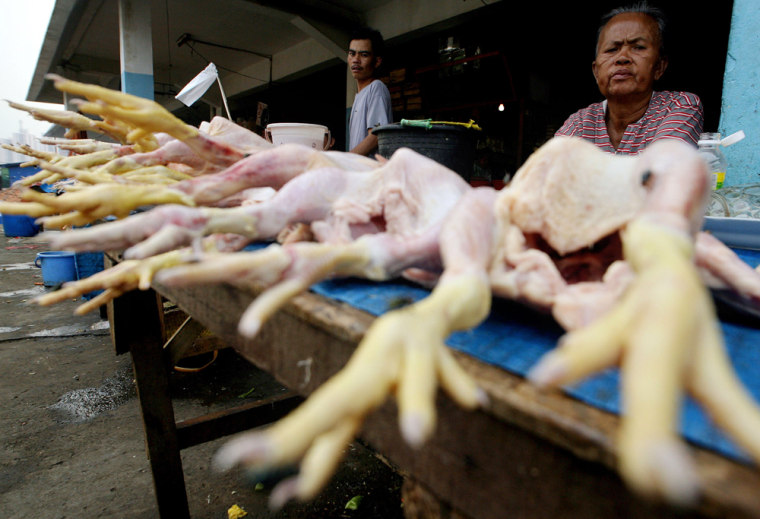The biggest question in health news at the end of 2006 is: What ever happened to bird flu?
H5N1 influenza fears
At the beginning of the year, concerns over the H5N1 influenza strain circulating among wild and domestic birds and infecting and killing scores of people in several countries dominated the world’s public health agenda.
President Bush spoke of the need for preparedness. Communities across the U.S. and throughout the world formulated plans for coping with a pandemic in case that strain, or some other, mutated to spread easily from person to person, potentially threatening millions of lives with a worldwide pandemic.
The dreaded deadly strain has, of course, not emerged, and we don’t hear much about it these days. But H5N1 continues to spread out of control in birds in some countries — notably China and Indonesia. As of this writing, the last human death was ominously a nurse who died in Indonesia on Nov. 28.
Good news: Breast cancer drop
The biggest and most heartening surprise in health news that emerged this year was the 7 percent drop in breast cancer cases in 2003, the latest year for which data are available.
The numbers cannot tell why. Most researchers believe it was directly related to the big news the year before when the huge Women’s Health Initiative study of hormone replacement therapy (HRT) for post-menopausal women was suddenly halted because the hormones caused an increase in breast cancer risk.
Almost overnight in 2002 about half of the 30 million women in the U.S. taking HRT stopped the treatment. By the next year the breast cancer numbers were down. The biggest drop — 12 percent — was in women in the age group 50 to 69 who typically take HRT and develop tumors that need estrogen to fuel them.
AIDS fight
In the world of AIDS, researchers stopped two major trials in Uganda and Kenya because they revealed very quickly that circumcising adult men reduced their rate of their acquiring HIV infection by an astounding 50 percent.
What to watch in 2007...
Fears for a pandemic linger
Scientists do not fear a pandemic any less now than they did at the beginning of the 2006. The natural events leading to a pandemic remain as poorly understood, but we reporters cannot keep repeating the same news. The concerns about bird flu have helped put more research dollars into rapid vaccine development and the world has been alerted to a threat that will not disappear anytime soon — developments many public health officials appreciate.
More breast cancer data
Many of us are waiting eagerly for the next set of U.S. government data on cancer that comes out in the spring of 2007. It is not certain the positive trend will continue since stopping the hormones could have just delayed the growth of hormone-dependent cancer rather than eliminating them. So it is possible the numbers could creep up again.
The hormone data is especially crucial because there are few things a woman can do to decrease breast cancer risk. Another major study in 2006 found that a low-fat diet, contrary to many popular expectations, did not lower the risk.
Genetic tests for cancer research
One of the big trends that will continue with all cancer research into 2007 is genetic tests to predict which patients will benefit from specific treatment. All too often patients get expensive chemotherapy with severe side effects to no avail. A great deal of research promises to target the drugs more specifically to those who will benefit.
AIDS challenge continues
Implementing circumcision as an AIDS-prevention strategy presents formidable ethical and practical challenges. But because the effect is so strong for a disease that has already infected tens of millions, early in 2007 the World Health Organization will be organizing strategy meetings to determine what can be done.
As for treatment of those already infected, a few years ago the World Health Organization had been predicting hopefully that by the beginning of 2006, 5 million people in poor countries would be receiving the life-sustaining antiviral medication widely available in wealthy countries. Despite donations from some wealthy countries, and organizations including the Gates Foundation, the number still remains at 1.3 million, a fifth of those who could benefit. As a result, throughout the world three people die of AIDS every five minutes — a number that will rise even higher in 2007
46 million uninsured
In 2007, lack of access to medications and treatments will also be a problem for the 46 million Americans without health insurance. There will doubtless be many new drugs, imaging devices and other technologies coming on the market. The progress is not in doubt. Paying for it remains the challenge.
